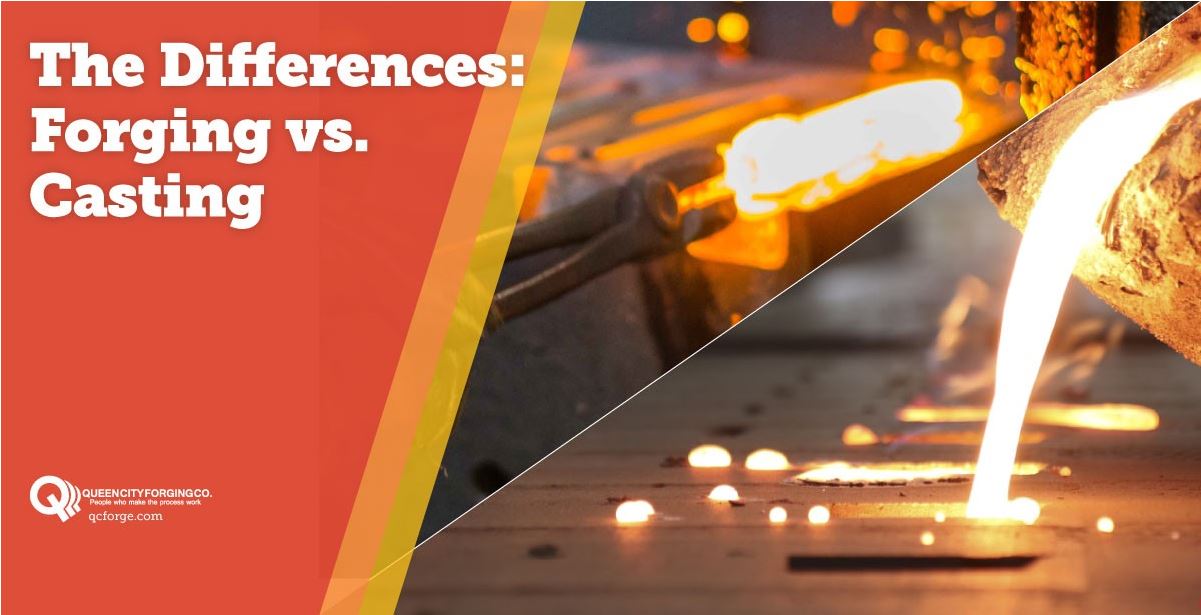If you’re in the metallurgical industry, you must have heard the term “forging.” However, if you’re not sure what forging is, its types, and usages, this article is for you.
We have covered everything about forging in this article. Let’s start with a common confusion.
Forging vs. Casting: Which is Better?

Forging is the solidification of metal by compressive forces. The forging process starts with a solid or liquid metal chunk that is heated to a solid-state. The metal is then shaped by multiple forces, including both compressive and tensile forces. By altering these forces, the metal can be sculpted into the desired shape.
While forging and casting are similar processes, they are not quite the same. A casting process is more generic and does not involve the actual shaping of the metal. Casting: Casting is the process of pouring liquid metal into a mold. The mold is often cooled by water, which solidifies the metal. Castings can be intricate, allowing for the creation of many different shapes.
Bottom line: the grain structure is more consistent and uniform in forged metals than cast metals, giving forging an edge over the casting process.
Having this confusion out of the way, let’s see the various forging types.
Impression Die Forging
Impression Die Forging is a very fast forging process that is accomplished by using a die and a ram. They both have a rectangular shape and are connected together.
When they come into contact, they create a forged shape. Although Impression Die Forging is a very fast process, it is more commonly used in the automotive industry. The reason for this is because the parts it produces are of very good quality.
This process is produced on mechanical presses using hammers or on hydraulic presses. The metal capacities vary from 22,000 tons to 55,000 tons.
Cold Forging
Cold forging is used to shape metal without the use of heat. It is especially useful in the automotive, construction, and marine industries but is also used in the manufacture of electrical fittings and other components. Cold forging is carried out using a mechanical hammer or a die, which is either powered by electricity or air.
The metals are deformed at temperatures below their recrystallization temperature, usually from room temperature to 150 °C by a press or die. Cold forging is not to be confused with warm forging, a process of deformation at temperatures above its recrystallization temperature.
This material flow process is used for metals that recrystallize at high temperatures, such as iron-based alloys. It isn’t meant for metals that recrystallize at low temperatures.
Adding cold forging to a process allows for creating parts with tighter tolerances, increased complexity, and better surface finish. Cold forging also allows for the creation of parts that would normally require hot forging but at a lower cost.
It includes several processes like,
- Cold heading
- Thread rolling
- Bending
- Extrusion
- Punching
- Coining
- Cold drawing
Open Die Forging
Open die forging is a type of forging that uses a fixed die – a die that is affixed in place during the forging process. This type of forging typically involves using a fully open hammer die. Thus, there is no need to fold the metal over during the process. Metal is loaded into a die cavity and struck by a hammer die that is raised above the work surface and then dropped onto the metal, compressing the metal into the die cavity.
Big metal pieces that weigh over 200,000 lbs. and greater than 80feet long can be pressed or hammered using an open Die forging process.
Seamless Rolled Ring Forging
In this process, a thick metal is punched to create a donut-shaped ring. After that, it is given the shape of a thin ring using squeezing, rolling, or pounding. This process is also known as ‘Rolled Ring Forging.’ It is used to manufacture parts that require a round cross-section but without the seam as found in a Hung Rolled ring. Seamless Rolled Ring Forging is an excellent way to create a ring-shaped part.
Metals used in Forging Process
Due to steel’s property to resist heat and corrosion, you’ll commonly see stainless steel forgings in many industries.
Other metals used are Aluminium and Titanium.
We hope this information helped you understand forging better!
